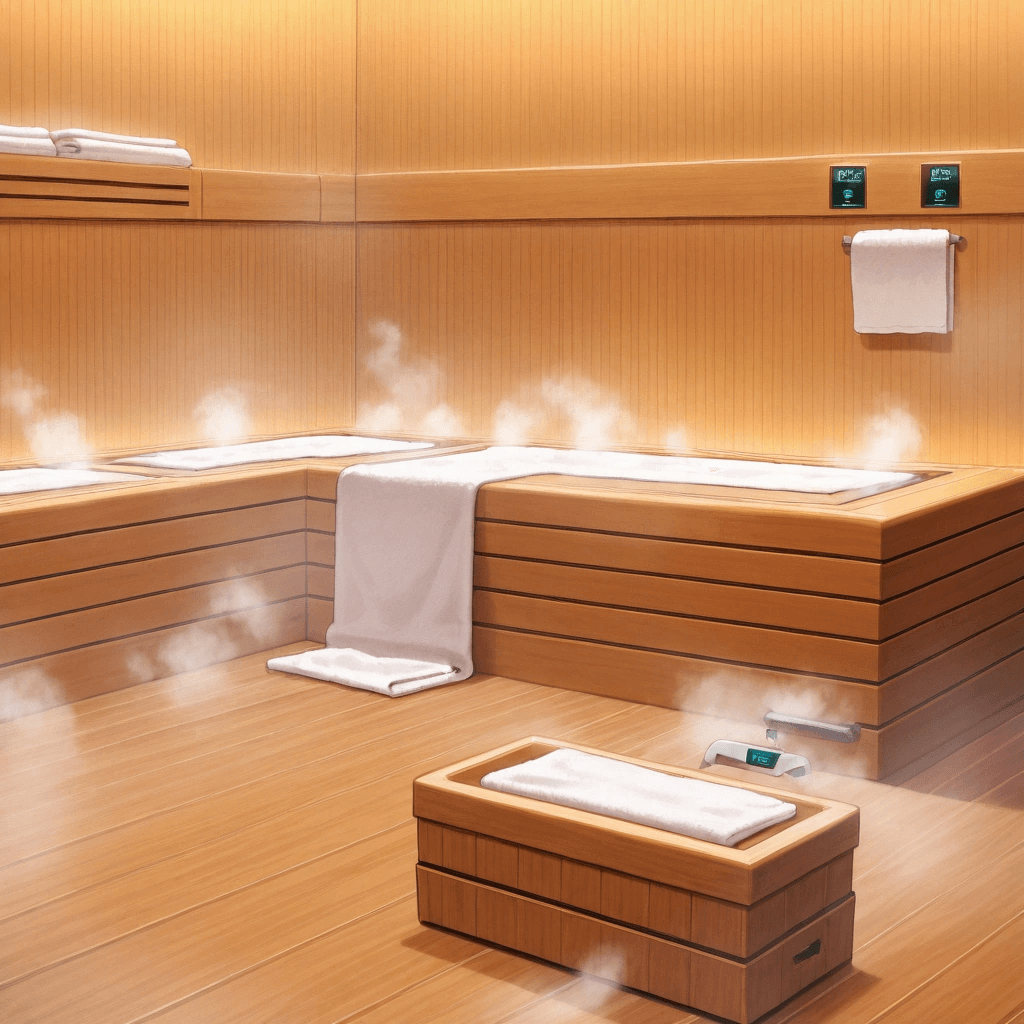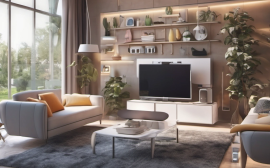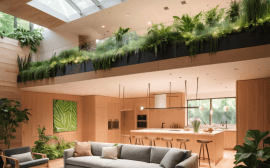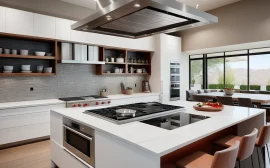Introduction: The Rise of the Home Wellness Sanctuary
In an era increasingly defined by the relentless pursuit of well-being, the concept of the home spa has transcended mere luxury, evolving into a necessity for many. The ability to retreat from the stresses of modern life into a personalized sanctuary of relaxation and rejuvenation is no longer a far-fetched dream but an attainable reality, fueled by advancements in home renovation technology and a growing understanding of preventative wellness. This comprehensive guide provides a roadmap for homeowners seeking to design and implement a professional-grade home spa, focusing on practical, cost-effective solutions that blend DIY ingenuity with strategic professional integration.
We aim to empower you to transform ordinary spaces into extraordinary havens of tranquility, enhancing not only your home’s value but, more importantly, your quality of life. This trend reflects a broader societal shift towards prioritizing mental and physical health, with individuals investing in personalized wellness solutions within the comfort of their own homes. The home wellness market is experiencing exponential growth, with projections estimating a multi-billion dollar valuation within the next five years. From identifying your unique wellness needs to mastering the nuances of space optimization, material selection, and sensory design, we’ll explore every facet of creating a bespoke spa experience tailored to your lifestyle and budget.
Whether you envision a minimalist, modern space or a more opulent, traditional luxury bathroom, understanding the core principles of home spa design is crucial. For the DIY spa enthusiast, we’ll delve into projects that can be tackled independently, such as installing aromatherapy diffusers, creating custom storage solutions, and implementing smart lighting systems. For more complex installations, such as a sauna, steam room, or jacuzzi, we’ll guide you on when and how to engage qualified professionals to ensure safety and compliance with local building codes.
As we navigate the current decade, we’ll also touch upon relevant regulatory perspectives, such as those concerning credential verification for specialized services like massage therapy or hydrotherapy, ensuring your project aligns with best practices and safety standards. In certain regions, particularly those with stringent building regulations, it’s essential to verify the credentials of contractors and ensure compliance with organizations like CHED (Commission on Higher Education) where applicable. Furthermore, integrating smart home technology can elevate your home spa experience to new heights. Imagine controlling the temperature, lighting, and sound system with a simple voice command, or scheduling automated aromatherapy sessions to coincide with your daily routine. This fusion of luxury living and smart home innovation creates a truly personalized and immersive wellness retreat.
Defining Your Wellness Needs and Spa’s Purpose
The cornerstone of any successful home spa lies in understanding your individual wellness needs and preferences. Are you seeking relief from chronic pain, stress reduction, improved sleep, or simply a dedicated space for relaxation and self-care? Identifying these core objectives will dictate the spa’s purpose and influence every subsequent home spa design decision. Consider the types of treatments you envision incorporating: hydrotherapy (jacuzzi, soaking tub), thermotherapy (sauna, steam room), aromatherapy, massage, or meditation. Once you have a clear understanding of your needs, translate them into tangible design elements.
For example, if stress reduction is a primary goal, prioritize calming colors, soft lighting, and soundproofing. If you’re an athlete seeking muscle recovery, a cold plunge pool or infrared sauna might be essential. Remember to consider any physical limitations or accessibility requirements to ensure the spa is inclusive and user-friendly for all members of your household. This initial assessment is crucial for creating a space that truly caters to your well-being. For the DIY spa enthusiast embarking on a home renovation or bathroom remodel, meticulous planning around plumbing and electrical infrastructure is paramount.
Integrating features like a jacuzzi or steam room requires careful consideration of water supply lines, drainage, and ventilation. Smart home integration can elevate the luxury bathroom experience, allowing for automated control of lighting, temperature, and even aromatherapy diffusion. Before demolition begins, consult with qualified professionals to ensure compliance with local building codes and to assess the structural integrity of your chosen space. Accurate measurements and detailed schematics will be invaluable throughout the renovation process, minimizing costly errors and maximizing space utilization.
Luxury living within your home wellness retreat extends beyond mere aesthetics; it encompasses the quality and functionality of spa equipment. Investing in high-end saunas, steam rooms, and hydrotherapy systems not only enhances the therapeutic benefits but also contributes to the longevity and value of your home. Consider features such as chromatherapy (color therapy) lighting, integrated sound systems, and programmable settings to personalize your spa experience. Furthermore, explore the potential of sensory design to create an immersive environment.
Incorporate natural elements like wood, stone, and water features to evoke a sense of tranquility. Selecting appropriate aromatherapy blends can further enhance relaxation and promote specific wellness goals. Prioritizing credential verification when sourcing contractors and spa equipment suppliers is crucial for ensuring safety and quality. Look for professionals with relevant certifications and a proven track record of successful home spa installations. In the realm of home wellness, CHED (Continuing Health Education Development) accreditation can be a valuable indicator of expertise and commitment to ongoing professional development. Thoroughly research spa equipment manufacturers to ensure their products meet rigorous safety standards and are backed by comprehensive warranties. By diligently vetting your resources, you can safeguard your investment and create a home spa that is both luxurious and safe.
Space Planning and Layout Optimization
Effective space planning is paramount, especially when working within existing architectural constraints. Begin by thoroughly assessing the available space, considering factors such as square footage, ceiling height, natural light, and plumbing access. Optimize the layout to maximize functionality and create a sense of flow. Consider these layout strategies: Zoning: Divide the spa into distinct zones for different activities (e.g., wet zone for bathing, dry zone for relaxation). This helps to maintain hygiene and prevent moisture damage.
Circulation: Ensure clear and unobstructed pathways between zones to facilitate easy movement. Privacy: Incorporate privacy screens, frosted glass, or strategic placement of fixtures to create secluded areas for relaxation. Ergonomics: Position fixtures and controls at comfortable heights and within easy reach. For smaller spaces, prioritize multi-functional elements. For example, a shower with built-in steam capabilities can eliminate the need for a separate steam room. Wall-mounted fixtures and storage solutions can free up valuable floor space.
Consider using 3D modeling software or online room planners to visualize different layout options and optimize space utilization. Don’t underestimate the power of mirrors to create the illusion of spaciousness and enhance natural light. Beyond basic zoning, the strategic allocation of space within your home spa design directly impacts its functionality as a true wellness retreat. Consider the interplay between wet and dry areas; a seamless transition from a sauna or steam room to a cool-down zone, perhaps featuring a strategically placed chaise lounge and aromatherapy diffuser, enhances the therapeutic benefits.
In luxury bathroom remodels, designers often incorporate a dedicated ‘transition zone’ – a space for applying lotions, meditating, or simply acclimatizing after heat exposure. These deliberate design choices elevate the experience from a mere bathroom remodel to a comprehensive home wellness haven. Moreover, ensure that electrical outlets are strategically placed for spa equipment like aromatherapy diffusers, towel warmers, and smart home integration for lighting and sound. When embarking on a DIY spa project, meticulous planning is even more crucial.
Prioritize plumbing access and ventilation to prevent costly mistakes later. Before committing to a layout, research building codes and obtain necessary permits for any home renovation involving plumbing or electrical work. Consider the weight-bearing capacity of your floors, especially if installing a jacuzzi or large soaking tub. Online resources and CHED credential verification for contractors can help ensure compliance and safety. Furthermore, think about future maintenance; easy access to plumbing and electrical components will simplify repairs and prevent future headaches.
Thoughtful planning upfront can save significant time and money during the home renovation process, transforming your vision of a home spa design into a tangible reality. Smart home technology can significantly enhance the functionality and ambiance of your home spa. Integrate smart lighting systems that allow you to adjust the color temperature and intensity to suit your mood. Voice-activated controls can manage everything from the sauna temperature to the music playlist, creating a truly hands-free experience. Consider installing a smart shower system that allows you to pre-set water temperature and pressure. For luxury living enthusiasts, advanced features like chromatherapy lighting in the jacuzzi or automated aromatherapy diffusion systems elevate the sensory design of the space. By seamlessly integrating technology, you can transform your home spa into a personalized and intuitive wellness environment, optimized for relaxation and rejuvenation.
Essential Equipment Selection: Features, Efficiency, and Maintenance
Selecting the right equipment is a critical investment in your home spa design, influencing both its functionality and long-term appeal. Each piece should be chosen based on your specific wellness needs, budget, and the spatial constraints of your home renovation or bathroom remodel project. Before diving into specific features, consider obtaining CHED credential verification for any wellness certifications held by potential consultants, ensuring you receive informed and reliable advice. Here’s a detailed breakdown of essential spa equipment considerations:
Sauna selection involves choosing between traditional Finnish saunas (dry heat) and infrared saunas (radiant heat). Traditional saunas offer a classic, intense heat experience, while infrared saunas provide a gentler, more penetrating warmth. For the DIY spa enthusiast, pre-fabricated sauna kits offer a convenient option, while those seeking a luxury bathroom experience might opt for a custom-built sauna with smart home integration for remote control of temperature and lighting. Consider energy efficiency, heating time, and maintenance requirements.
Look for models with digital controls, built-in lighting, and aromatherapy diffusers to enhance the sensory design of your home wellness retreat. For a steam room, prioritize a steam generator with automatic shut-off and precise temperature control. Proper ventilation is crucial to prevent moisture buildup and mold growth, necessitating the use of moisture-resistant materials like tile and specialized sealants. Smart home integration can add convenience, allowing you to preheat the steam room remotely. The experience can be elevated through aromatherapy integration, injecting soothing scents into the steam.
The planning phase should carefully consider the slope of the bench seating to ensure water runoff and overall comfort. A Jacuzzi, or hot tub, offers hydrotherapy benefits and relaxation. When selecting one, consider size, jet configuration (number, type, and placement), heating system efficiency, and the effectiveness of the filtration system. Energy-efficient models with ozone sanitation and programmable settings can significantly reduce operating costs. For luxury living, consider models with built-in entertainment systems and automated water chemistry management.
Regular maintenance, including filter cleaning and water balancing, is essential for longevity. A well-maintained jacuzzi can be a centerpiece of your home spa design. In the shower area, opt for a showerhead with multiple spray patterns to cater to different preferences, and consider adding body jets for a massage-like experience. A curbless shower design enhances accessibility and creates a seamless aesthetic, contributing to a modern, spa-like ambiance. Smart shower systems offer precise temperature control and water conservation features.
High-end bathroom remodel projects often incorporate digital controls to personalize the water temperature, pressure, and spray patterns. Integrating mood lighting can further transform the shower into a therapeutic experience. A soaking tub provides a space for deep relaxation and stress relief. Select a tub that is deep and comfortable, with ergonomic features such as lumbar support and armrests. Consider materials such as acrylic (lightweight and durable), cast iron (excellent heat retention), or copper (naturally antibacterial and visually striking).
Freestanding tubs create a focal point in the luxury bathroom, while built-in tubs offer space-saving solutions. Consider adding features like chromatherapy (color therapy) and air jets to enhance the spa experience. Be mindful of the tub’s weight and ensure the floor can support it. Prioritize energy-efficient models across all spa equipment to minimize operating costs and environmental impact. Research maintenance requirements and factor in the cost of cleaning supplies and potential repairs. Don’t hesitate to consult with qualified professionals for installation and ongoing maintenance to ensure optimal performance, safety, and longevity of your spa equipment. Consider incorporating sensory design elements like sound systems and aromatherapy diffusers to create a truly immersive and personalized home wellness experience.
Material Choices, Sensory Integration, and Final Touches
The choice of materials significantly impacts the hygiene, durability, and aesthetic appeal of your home spa design. Prioritize materials that are water-resistant, easy to clean, and resistant to mold and mildew, ensuring a safe and long-lasting wellness retreat. This is especially crucial in areas prone to moisture, such as around a sauna, steam room, or jacuzzi. Your selection should reflect both practical considerations and your desired aesthetic for a luxury bathroom experience. Consider these options when planning your bathroom remodel.
Porcelain and ceramic tiles are excellent choices for floors and walls due to their durability, water resistance, and wide range of styles. Opt for textured tiles to prevent slipping, especially in wet areas. For a DIY spa approach, explore readily available tile options at home improvement stores. Naturally water-resistant woods like cedar or teak are ideal for benches, trim, and accent walls. Ensure the wood is properly sealed and treated to prevent moisture damage; regular maintenance is key.
Natural stone such as marble, granite, or slate can add a touch of luxury and sophistication. However, stone can be porous and require sealing to prevent staining. Tempered glass is essential for shower enclosures and partitions, offering both safety and style. Frosted glass provides privacy while allowing natural light to filter through. Sensory design plays a crucial role in creating a tranquil home wellness environment. Incorporate natural elements such as plants and water features to create a calming and inviting atmosphere.
Consider the color palette and lighting to evoke a sense of tranquility. Soft, warm lighting and natural colors such as blues, greens, and earth tones can promote relaxation. Integrate a sound system with calming music or nature sounds to further enhance the sensory experience. Aromatherapy diffusers can release essential oils that promote relaxation and well-being. The strategic placement of lighting and sound can significantly elevate the spa experience, transforming a simple bathroom into a personalized sanctuary.
When undertaking a home renovation of this scale, especially if incorporating complex spa equipment, it’s prudent to consider the perspective of Commission on Higher Education (CHED) policies on credential verification when hiring contractors or consultants, ensuring they possess the necessary qualifications and expertise for the project. This is particularly relevant when dealing with specialized installations like electrical work for a sauna or plumbing for a steam room. Finally, remember to showcase your design approach on social media to gain inspiration and share your creation with others. Documenting your DIY spa journey can inspire others and provide valuable insights into your unique home spa design.



